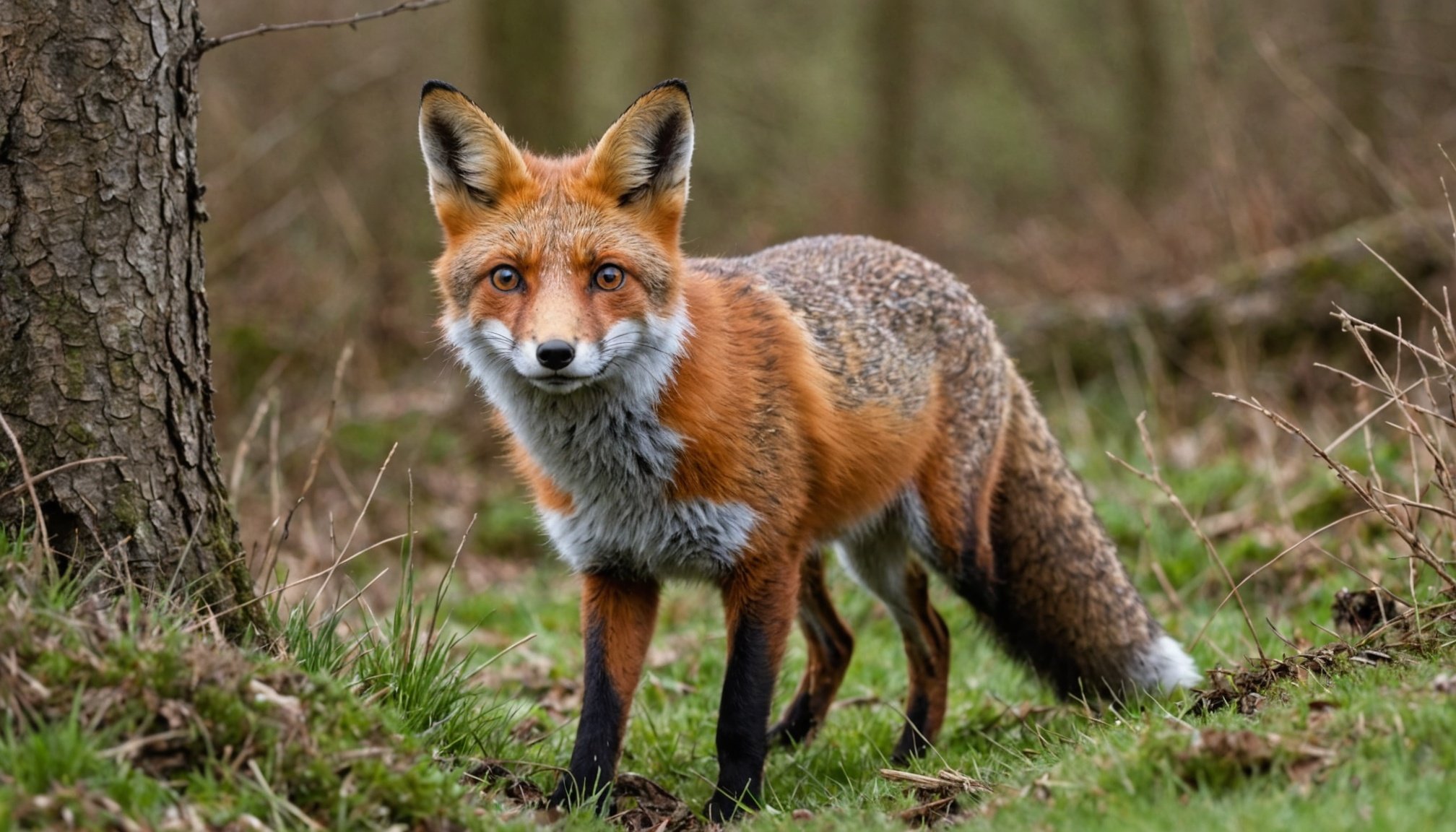Overview of Recent UK Hunting Laws
The landscape of UK hunting laws has witnessed notable amendments, aiming at enhancing wildlife welfare. The primary legislative changes focus on restricting certain hunting practices that compromise animal welfare. For instance, the use of snares and glue traps is now limited, ensuring higher standards in humane treatment during hunting activities.
Key Legislative Changes
New updates in the legislation have been influenced significantly by a comprehensive consultation process. This process extended over several months, involving numerous stakeholders, from wildlife experts to local communities. The consultation not only provided a platform for public input but also underscored the importance of aligning hunting practices with ethical standards.
Topic to read : Revitalizing Traditional Orchards: UK Citizens Leading the Charge to Protect Unique Wildlife
Importance of Consultation
The extended duration of consultations highlights the growing recognition of wildlife welfare as a priority. It ensured that the legislation reflects the broad consensus on sustainable hunting practices. Public involvement has been pivotal in these changes, offering insights and addressing concerns regarding existing practices.
Legal Definitions in Wildlife Protection
Under the new legal framework, wildlife protections are clearly defined. For instance, specific terms delineate species that cannot be hunted and areas designated as sanctuaries, thus preventing any ambiguities concerning enforcement. This precision in legal definitions ensures that hunting practices adhere to the updated regulations, fostering a balance between tradition and conservation goals.
Additional reading : Breathing New Life into Ecosystems: UK’s Mission to Restore Pine Marten Habitats
Specific Protections for Foxes and Hares
The new protections for foxes and hares represent a pivotal shift in the approach to wildlife conservation and animal rights. By comparing these measures with previous regulations, one can observe a substantial improvement in how both species are treated. Earlier, foxes and hares often faced relaxed restrictions, primarily allowing hunting under liberal situations. However, the detailed analysis of current reforms reveals a stronger emphasis on humane treatment and sustainability, highlighting the changes for each species.
Fox protection now involves stringent limits on hunting, ensuring that populations are maintained at ecologically viable levels. This shift acknowledges their role as vital predators in maintaining a balance in ecosystems. Similarly, hare welfare is enhanced through restrictions that safeguard against overhunting, a significant threat due to their vulnerable breeding patterns. Ecologically, both foxes and hares contribute to biodiversity; thus, the protections not only serve animal rights but also benefit the broader environment by promoting species equilibrium.
Understanding the necessity of these protections requires recognizing the intricate relationships foxes and hares have with their surroundings. The new regulations are designed to respect these interactions, reflecting a deeper understanding of ecological dynamics and the need to prioritize ethical considerations in human-wildlife relations.
Enforcement Mechanisms of the New Laws
Implementing effective hunting law enforcement relies heavily on comprehensive wildlife monitoring systems. These frameworks aid in tracking and analyzing wildlife populations and movements to ensure regulations are adhered to. Authorities use technology-driven strategies such as drones and satellite imagery for real-time wildlife monitoring. These technologies not only enhance detection but also improve response times to illegal hunting activities.
To deter non-compliance, the legal framework imposes severe penalties on violators. Individuals found guilty face hefty fines and potential jail time. Additionally, suspension of hunting licenses is a common repercussion. Repeat offenders could face even more stringent measures, underscoring the system’s resolve in enforcing wildlife protection laws.
Governmental agencies, alongside non-governmental organizations (NGOs), play a pivotal role in the implementation and oversight of these laws. NGOs, for instance, provide indispensable support through advocacy, research, and on-ground monitoring. Their collaboration with government bodies enhances enforcement capabilities by pooling resources and expertise.
Ultimately, these efforts create an ecosystem where technology, policy, and community engagement converge to uphold the integrity of wildlife hunting law enforcement. As a result, these multi-tiered approaches ensure a comprehensive and sustainable enforcement mechanism, taking advantage of technological innovations and collaborative strengths.
Expert Opinions on Wildlife Welfare
In the realm of wildlife conservation, the viewpoints of experts are invaluable. Renowned conservationists and legal analysts weigh in on the legislative impact on wildlife welfare. These professionals argue that well-crafted laws have the potential to protect endangered species and preserve biodiversity effectively.
From a legal perspective, it’s essential to understand how legislation can facilitate or hinder conservation efforts. Legal experts suggest that clear and enforceable laws with strict penalties for violations are crucial for success. They further stress the importance of harmonizing international agreements, as many species cross national borders.
Wildlife conservationists acknowledge that legislation is only part of the solution. Public perception and community engagement are equally critical, according to these experts. Conservation strategies often succeed when communities are actively engaged and see direct benefits from conservation efforts. Public awareness campaigns can shift perception, encouraging people to support initiatives that protect local wildlife.
Conservationists predict that the long-term implications of effective legislative frameworks could lead to enhanced habitats for wildlife, thus ensuring healthier ecosystems. The collaboration between legal frameworks and active participation from communities establishes a robust structure for wildlife welfare, offering a beacon of hope for future generations.
Case Studies and Legislative Impact
Examining the intersection of hunting laws and wildlife populations reveals significant insights into biodiversity conservation. Wildlife case studies often serve as crucial evidence in crafting and refining these regulations. By studying various ecosystems, researchers can gauge the impact of hunting on different species. For instance, in regions where hunting regulations are stringently enforced, there have been observable changes in population dynamics, particularly among foxes and hares.
Let’s delve into the behavioural adaptations in these species. Following regulation adjustments, hare populations often display increments, attributed to reduced predatory threats. Conversely, foxes might exhibit altered predatory patterns due to shifts in available prey. This behavioural analysis highlights the complex ripple effects legislative changes impose on ecosystems.
Legislative analysis further reveals the socio-political aspects influencing wildlife management laws. Legislative bodies must balance conservation efforts with cultural and economic dimensions. For instance, how legislation aligns with sustainable hunting practices can either bolster or undermine wildlife preservation goals.
Visual representations, such as population graphs and heat maps, have been pivotal in depicting these impacts. Such data not only bolster the case for effective wildlife management but also serve as a persuasive tool in policy discussions. Through these methods, stakeholders are equipped to make informed, evidence-based decisions.
Comparative Analysis with Past Laws
Understanding historical hunting laws provides invaluable insights into how legislative approaches to wildlife welfare have evolved in the UK. In past decades, laws were often inadequate, primarily prioritising human interests over ecological balance. For example, early regulations neglected to consider animal populations’ long-term sustainability, often leading to overhunting and ecosystem disruption.
A notable improvement of modern legislation compared to former regulations is the comprehensive integration of scientific data into policymaking. This shift ensures that hunting laws reflect current ecological understandings, promoting biodiversity and ecosystem health. Where past laws might have overlooked the significance of species’ roles within their habitats, the current framework prioritises these connections, revealing a more sophisticated legislative comprehension.
In terms of wildlife history, earlier conversations often lacked depth, focusing on immediate economic gain rather than conservation. Modern laws have advanced these discussions, recognising wildlife welfare as integral to sustainable development. This has resulted in substantial benefits such as increased biodiversity protection and eco-tourism opportunities, previously unimaginable under older statutes.
The legislative comparison underscores how far UK legislation has come, establishing a dialogue between conservationists and lawmakers, driven by shared values of preserving nature for future generations. Through understanding this evolution, stakeholders can continue to refine these laws, ensuring they remain responsive to new environmental challenges.











